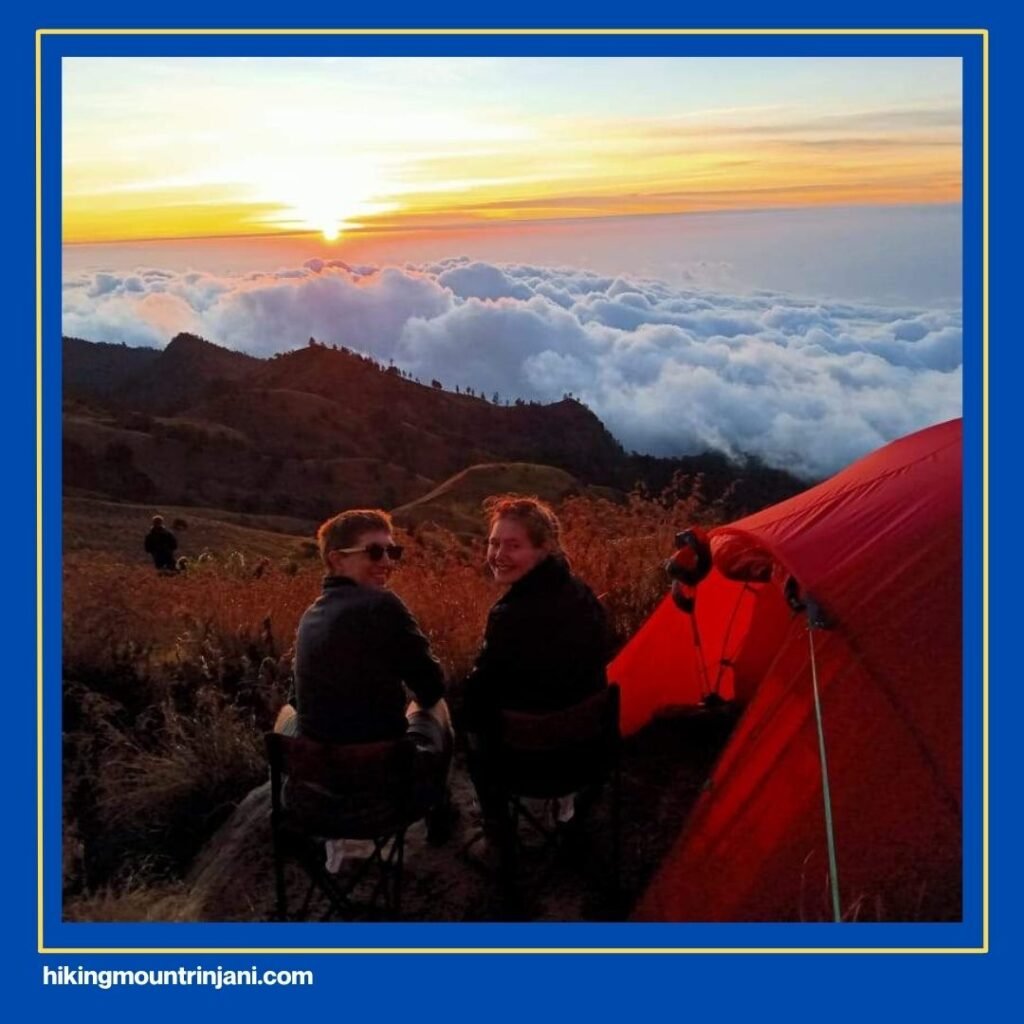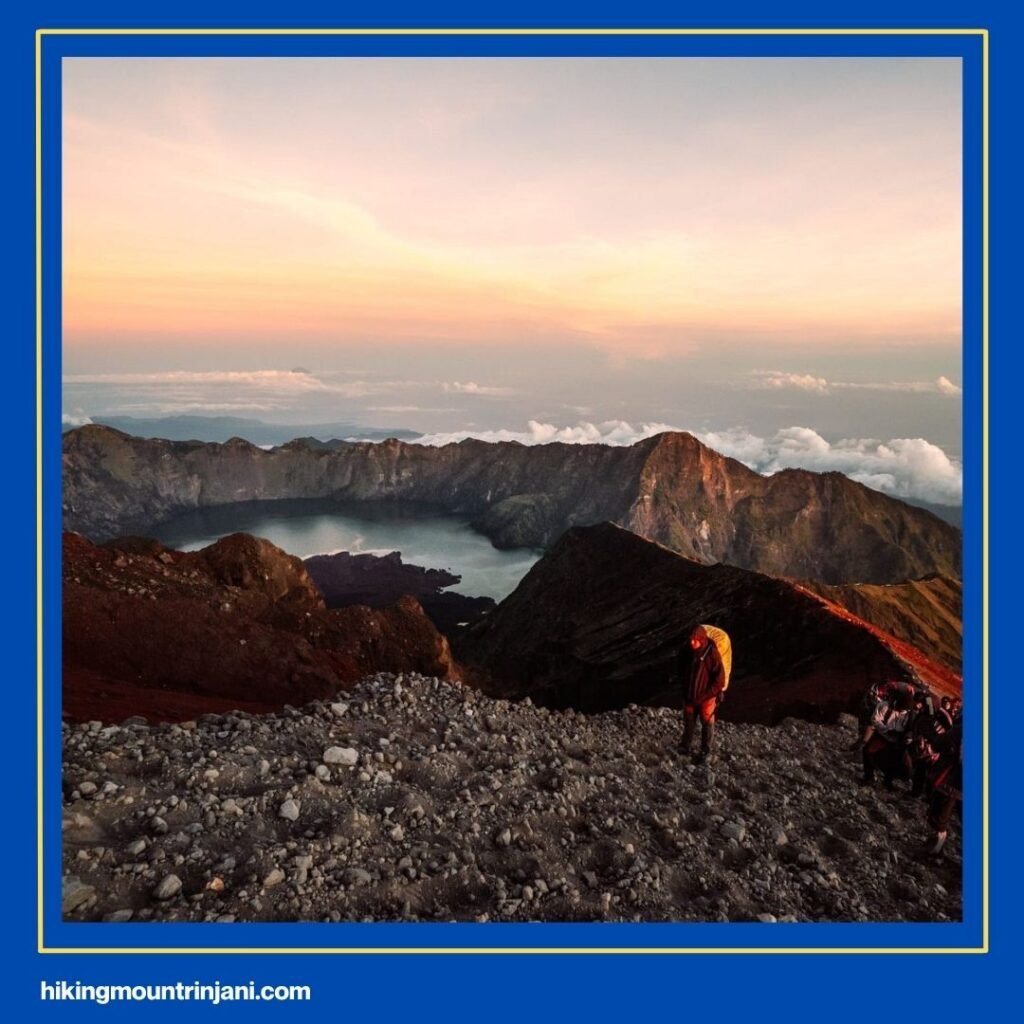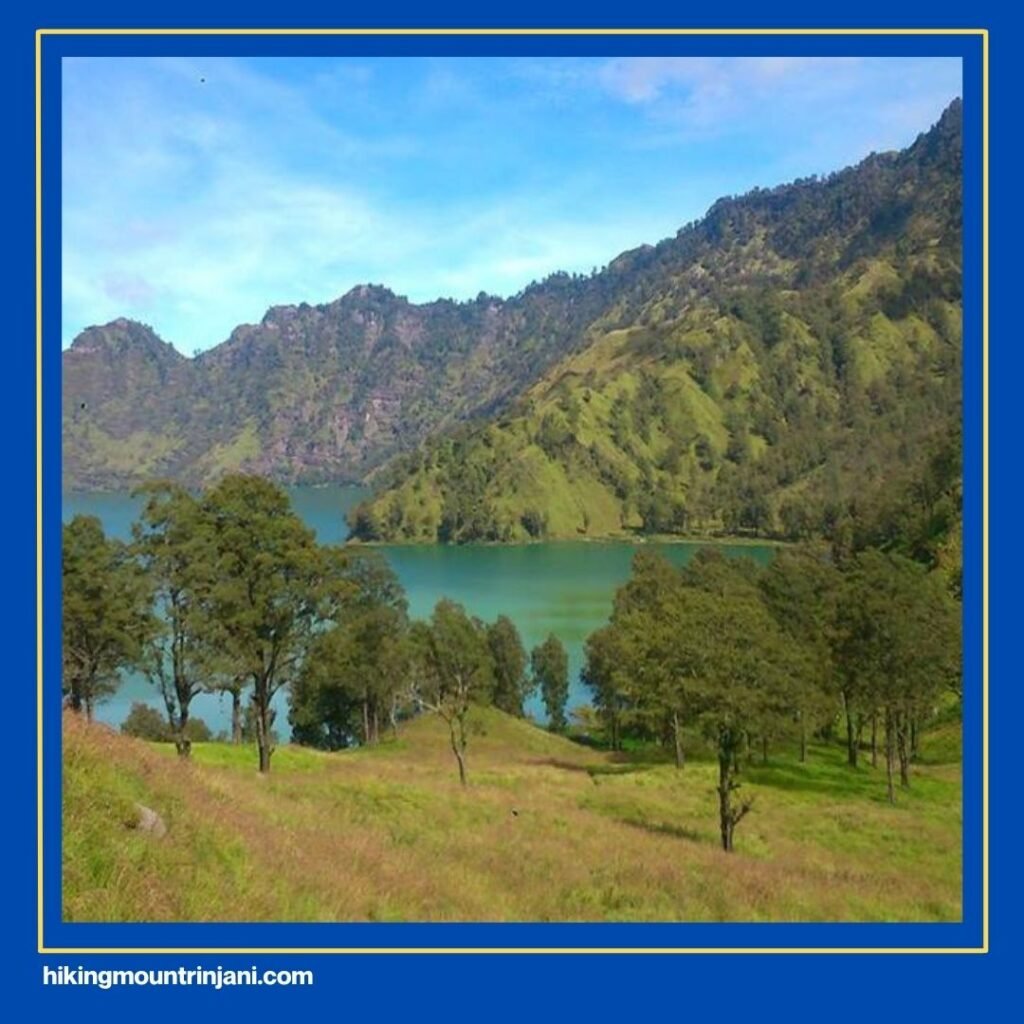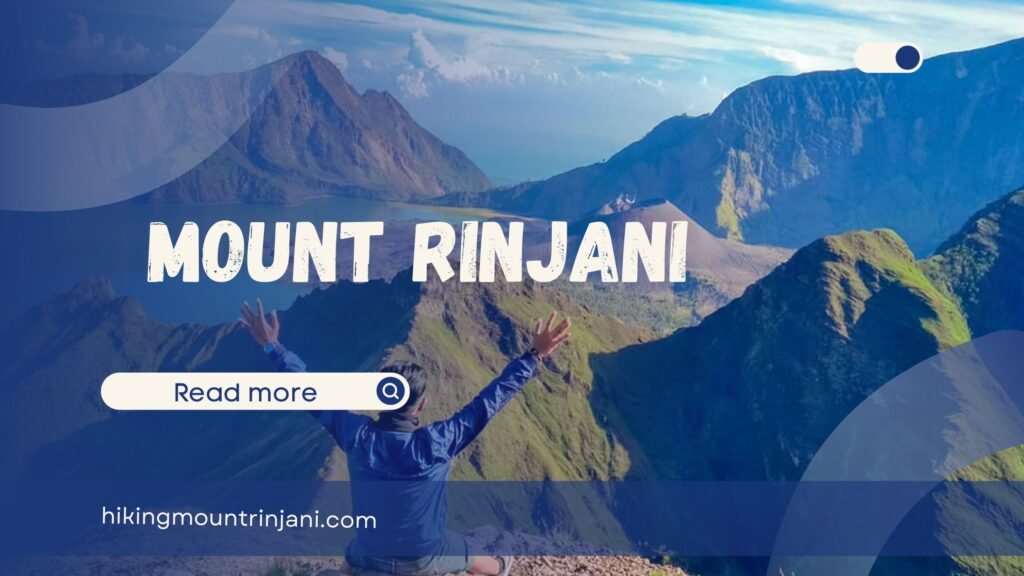Lombok, often overshadowed by its famous neighbor Bali, holds a crown jewel that draws adventurers from across the globe: Mount Rinjani. Standing majestically at 3,726 meters (12,224 feet) above sea level, it’s Indonesia’s second-highest volcano and an active one at that! Trekking Mount Rinjani is not just a hike; it’s an epic journey through diverse landscapes, challenging terrain, and rewarding views that will stay with you long after you descend.
This colossal stratovolcano is nestled within a national park, offering a sanctuary for unique flora and fauna. Its colossal caldera cradles a stunning crescent-shaped lake, Segara Anak, with a new volcanic cone, Gunung Barujari, emerging from its center. Whether you’re an experienced mountaineer or an eager beginner, Rinjani promises an adventure filled with breathtaking sunrises, star-filled nights, and a profound connection with nature.
Why Trek Mount Rinjani?

Beyond the sheer physical challenge, here’s what makes a Mount Rinjani trek an unmissable experience:
- Spectacular Panoramic Views: From the summit, you’ll witness an awe-inspiring 360-degree panorama of Lombok, Bali’s Mount Agung, the Gili Islands, and Sumbawa.
- The Iconic Segara Anak Lake: Descend into the caldera to discover the stunning turquoise crater lake, a sacred site for locals, perfect for a refreshing dip or a relaxing soak in its natural hot springs.
- Unique Ecosystems: Traverse through lush tropical rainforests, savanna grasslands, and challenging volcanic scree, experiencing dramatic shifts in scenery and climate.
- Starry Nights: Far from city lights, the night sky on Rinjani is an astronomer’s dream, offering an incredible display of stars.
- Sense of Achievement: Reaching the summit of Rinjani is a significant accomplishment, leaving you with a profound sense of pride and unforgettable memories.
Essential Information for Your Mount Rinjani Trek

Planning is key for a successful Rinjani adventure. Here’s what you need to know:
Trekking Seasons & Best Time to Climb
- You should aim to climb Mount Rinjani between April and December, as this is the dry season and offers the most favorable conditions. The weather is more stable, with clearer skies and less rain, offering the best views.
- Shoulder Seasons: April and December can be shoulder seasons with a higher chance of rain, but the trails might be less crowded and the landscape greener.
- Closed Season: Mount Rinjani National Park is officially closed from January 1st to March 31st due to heavy rainfall during the monsoon season, which makes the trails treacherous and unsafe. It’s important to confirm the latest details before you make your travel arrangements.
- Weather Expectation: Even in the dry season, weather on Rinjani can be unpredictable. Be prepared for cold temperatures, especially at the crater rim and summit (can drop to near freezing or below zero overnight), strong winds, and occasional rain. Layers are essential!
Mount Rinjani Trekking Routes
There are three main official routes to access Mount Rinjani, each offering a different experience:
- Sembalun Route (East Lombok):
- Starting Point: The trek begins in Sembalun Lawang Village, which is located at approximately 1,100 meters above sea level.
- Difficulty: This is the most popular route for summit attempts as it starts at a higher elevation, making the overall climb to the summit shorter. However, it involves a long, challenging ascent on loose volcanic scree, especially on summit day.
- Typical Treks: 2 Days 1 Night (Summit only, very challenging), 3 Days 2 Nights (Summit + Lake/Hot Springs), 4 Days 3 Nights (Summit + Lake/Hot Springs, more relaxed).
- Views: Open savannas, rolling hills, and direct views of the summit.
- Senaru Route (North Lombok):
- Starting Point: Senaru Village (around 600m above sea level).
- Difficulty: Easier gradient initially, passing through dense tropical rainforest. This route is typically chosen by those who want to reach the Senaru Crater Rim for stunning views of the lake and sunrise without attempting the main summit. The climb from Pos 3 to the crater rim is challenging.
- Typical Treks: 2 Days 1 Night (Crater Rim only), 3 Days 2 Nights (Crater Rim + Lake/Hot Springs, returning to Senaru).
- Views: Lush rainforest, Sendang Gile and Tiu Kelep waterfalls (accessible near the village), and the picturesque Senaru Crater Rim.
- Torean Route (North Lombok):
- Starting Point: Torean Village.
- Difficulty: This route is considered the most challenging and longest, offering incredible valley landscapes and unique perspectives. It’s less frequented and ideal for experienced trekkers seeking a deeper immersion in nature.
- Views: Penimbungan Waterfall, vast valley landscapes, and a different approach to the lake and summit.
Permits, Entrance Fees, and Rules
- Mandatory Requirements: It is mandatory to trek Mount Rinjani with a licensed guide and porters, and to obtain a trekking permit from Mount Rinjani National Park. You cannot trek independently.
- Entrance Fee: For international guests, the daily entrance ticket to Mount Rinjani National Park costs around 200,000 Indonesian Rupiah. This is roughly $13-$15 USD, but keep in mind that the exact amount can fluctuate. This fee usually includes basic accident insurance. Reputable trekking companies will include this fee in their package price.
- Registration: All trekkers must register at the Rinjani Trek Centre (RTC) in either Senaru or Sembalun before starting their trek.
- Rules:
- Leave No Trace: Strictly adhere to Leave No Trace principles. Pack out all your trash, and do not leave anything behind. Littering is prohibited and carries a penalty.
- Respect Nature: Do not disturb wildlife, cut trees, or light uncontrolled fires.
- No Solo Trekking: Always stay with your guide and group for safety.
- Age Limit: Anyone under the age of 17 must be with an adult to trek Mount Rinjani, and the youngest a person can be is 10.
- Health: The trek is physically demanding. Trekkers should be in good physical condition and consult a doctor if they have any underlying health issues.
Facilities on the Trails
- Basic Amenities: Don’t expect luxury. Facilities on the mountain are basic but functional. Your trekking package will include tents, sleeping bags, sleeping mats/mattresses, and cooking gear.
- Toilet Tents: Reputable tour operators provide toilet tents for privacy and hygiene, though these are often simple pop-up structures.
- Water: Porters carry all the necessary drinking water and will collect additional water from natural springs where safe.
- Meals: Your guides and porters will prepare all meals during the trek, often fresh and delicious, serving local Indonesian dishes.
- Rest Points: There are designated rest posts (Pos) along the routes where you can take breaks, have meals, and set up camp.
Guides and Porters
- Crucial Support: Guides and porters are the backbone of a Rinjani trek. Guides lead the way, ensure your safety, provide information, and manage the trek. Porters carry all the communal gear, food, water, and camping equipment (typically up to 20kg per porter).
- Personal Luggage: Porters generally do not carry personal backpacks. You will carry your own daypack with essentials. If you need assistance with personal luggage, you can arrange for an extra personal porter for an additional fee (e.g., around IDR 300,000 per porter per day).
- Tipping: Tipping your guides and porters at the end of the trek is customary and highly appreciated for their hard work.
Accommodation Before and After the Climb
- Pre-Trek Stay: Most trekking packages include one night of accommodation in either Senaru or Sembalun village the night before your trek. This allows you to rest, receive a briefing from your guide, and prepare.
- Post-Trek: After your trek, your package usually includes transport back to your hotel in Lombok (e.g., Senggigi, Mataram, Bangsal, or Kuta Lombok).
What to Expect on the Trek

Mount Rinjani is physically demanding, but incredibly rewarding. You’ll experience:
- Varying Terrain: From muddy rainforest trails to steep, dusty savanna paths, and the infamous loose volcanic scree near the summit, be prepared for diverse ground conditions.
- Altitude: The altitude can affect some trekkers, especially on summit day. Take it slow, stay hydrated, and communicate any symptoms to your guide.
- Temperature Swings: Days can be warm, but nights at higher altitudes are very cold. Pack layers!
- Mental Challenge: The final push to the summit is notoriously tough, requiring significant mental fortitude. However, the sunrise view from the top is absolutely worth every step.
- Teamwork: You’ll be part of a team, sharing the journey with fellow trekkers, and relying on the expertise and support of your guides and porters.
Your Rinjani Dream Awaits. Climb Mount Rinjani with Hiking Mount Rinjani!
Feeling inspired to conquer the magnificent Mount Rinjani? Don’t just dream about it, make it a reality with the experts!Hiking Mount Rinjani (hikingmountrinjani.com) is your dedicated partner for an unparalleled trekking experience. Based right here in Lombok, they specialize in providing top-tier Mount Rinjani services, ensuring your adventure is safe, seamless, and truly unforgettable.

